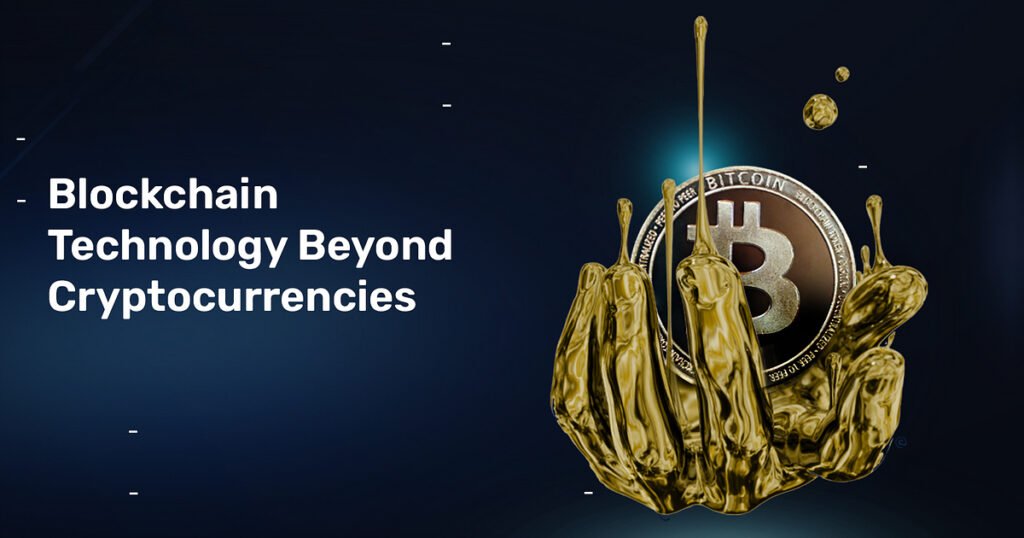Blockchain Beyond Bitcoin: Real-World Applications and Innovations

Introduction
Blockchain technology, initially introduced as the underlying infrastructure for Bitcoin, has evolved far beyond its original purpose. Its decentralized, secure, and transparent nature has sparked innovations across various industries, revolutionizing how data is managed and transactions are conducted. This article explores real-world applications and innovations of blockchain technology beyond Bitcoin, highlighting its transformative potential.
1. Supply Chain Management
Transparency and Traceability
Blockchain provides an immutable ledger that can record every transaction along the supply chain. This transparency ensures that all stakeholders can trace the origin and journey of products, reducing fraud and ensuring product authenticity. For example, Walmart uses blockchain to track the provenance of food items, enhancing food safety by quickly identifying contamination sources.
Efficiency and Cost Reduction
Smart contracts can automate and streamline supply chain processes, reducing the need for intermediaries and minimizing human errors. This automation leads to faster and more efficient transactions, lowering operational costs. IBM’s Food Trust platform leverages blockchain to improve the efficiency of supply chain operations in the food industry.
2. Healthcare
Secure Patient Data Management
Blockchain technology can securely store and manage patient records, ensuring data integrity and privacy. Patients can control their medical information and share it with healthcare providers as needed, improving care coordination and reducing administrative burdens. Projects like MedRec are exploring blockchain solutions for secure and interoperable electronic health records.
Drug Traceability and Counterfeit Prevention
Blockchain can track pharmaceuticals from production to distribution, ensuring that drugs are authentic and have not been tampered with. This traceability helps combat the problem of counterfeit medications, protecting patient safety. The MediLedger Project is one such initiative using blockchain to secure the pharmaceutical supply chain.
3. Finance and Banking
Cross-Border Payments
Blockchain enables faster, cheaper, and more secure cross-border payments by eliminating the need for intermediaries like correspondent banks. Ripple’s XRP and Stellar’s XLM are blockchain platforms designed to facilitate efficient international transactions, reducing costs and settlement times.
Decentralized Finance (DeFi)
DeFi platforms leverage blockchain to offer financial services such as lending, borrowing, and trading without traditional intermediaries. These platforms provide greater accessibility and inclusivity, allowing anyone with an internet connection to participate. Examples include platforms like Aave, Compound, and Uniswap.
4. Real Estate
Property Transactions
Blockchain can streamline real estate transactions by automating processes through smart contracts. These contracts can handle everything from escrow to title transfers, reducing paperwork and processing times. Propy is a platform that uses blockchain to facilitate and secure real estate transactions, making them faster and more transparent.
Land Registry
Blockchain can create tamper-proof land registries, ensuring that property ownership records are accurate and immutable. This transparency can help reduce disputes and fraud related to land ownership. Countries like Sweden and Georgia are piloting blockchain-based land registry systems to enhance trust and efficiency.
5. Voting Systems
Secure and Transparent Elections
Blockchain technology can provide a secure and transparent platform for voting, ensuring that each vote is accurately recorded and cannot be tampered with. This transparency can increase trust in the electoral process and reduce the risk of fraud. Initiatives like Voatz and Horizon State are developing blockchain-based voting systems to enhance election integrity.
6. Intellectual Property and Royalty Management
Copyright Protection
Blockchain can securely register and manage intellectual property rights, providing an immutable record of ownership. This transparency can help creators protect their work and ensure they receive fair compensation. Platforms like Ascribe and Po.et are exploring blockchain solutions for copyright protection and content monetization.
Royalty Distribution
Smart contracts can automate royalty payments, ensuring that creators and rights holders are paid accurately and promptly. This automation reduces administrative overhead and enhances transparency in royalty distribution. Music and entertainment platforms like Ujo Music are leveraging blockchain to improve royalty management.
7. Energy Sector
Decentralized Energy Trading
Blockchain can facilitate peer-to-peer energy trading, allowing consumers to buy and sell energy directly from each other. This decentralization can promote the use of renewable energy and enhance grid efficiency. Projects like Power Ledger and Grid+ are pioneering blockchain-based energy trading platforms.
Grid Management
Blockchain can improve the management and optimization of energy grids by providing real-time data and automating processes through smart contracts. This efficiency can lead to better resource allocation and reduced energy costs. The Energy Web Foundation is developing blockchain solutions for enhanced grid management.
Conclusion
Blockchain technology’s potential extends far beyond its initial use case in Bitcoin. Its applications in supply chain management, healthcare, finance, real estate, voting, intellectual property, and the energy sector demonstrate its transformative power. As blockchain continues to evolve, its ability to provide transparency, security, and efficiency will drive further innovation and adoption across various industries. Embracing these advancements will unlock new opportunities and create a more decentralized, trustworthy, and efficient global economy.